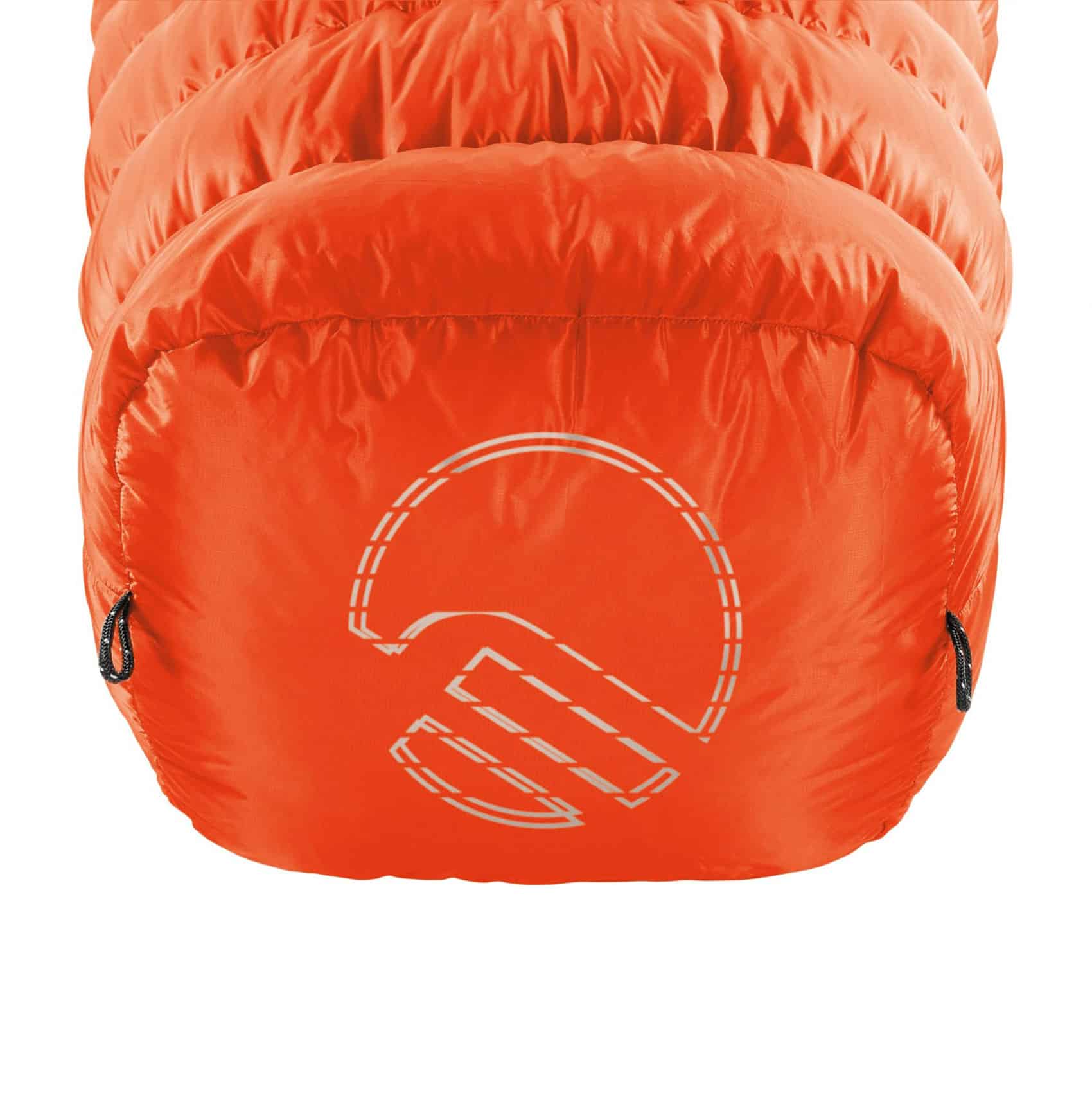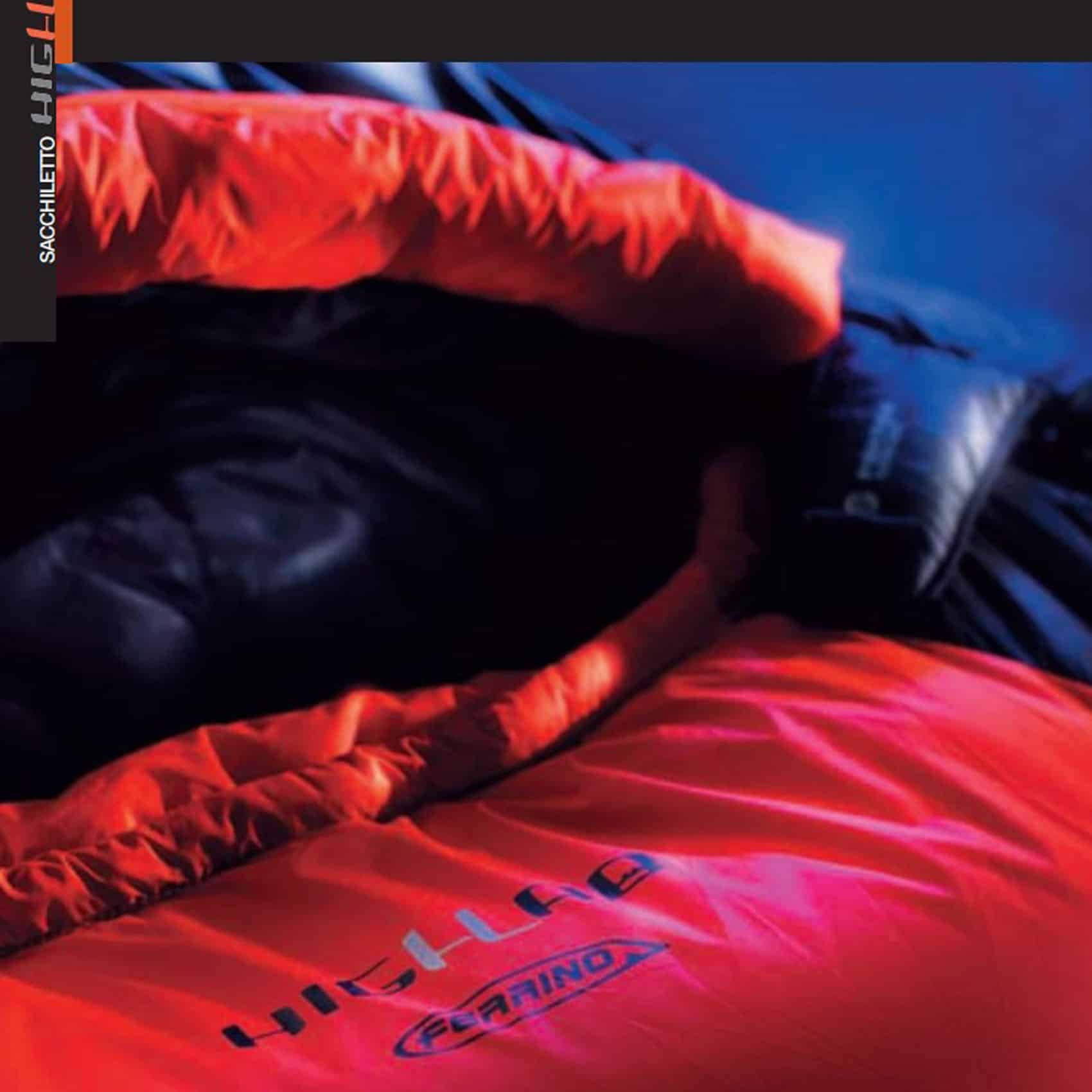Ferrino sleeping bags for expeditions Highlab revolution 1200 wts rds down is the ideal sleeping bag for those who want to rest during expeditions in extreme conditions, as it offers thermal insulation down to -45 ° C and comfort that is around -22 ° C (comfort temperature for men, for women consider a few degrees less ).
- Outer fabric: Nylon 20D 380T MiniRipstop
- Inner fabric: Nylon 20D 380T MiniRipstop
- Filling: 1200 g Extradown 95/5 800 cuin
– W.T.S. Stretch System: replacement welding of the external seams to minimize heat dispersion and stretch construction of the internal channels to obtain a sleeping bag in which to move freely
– Windscreen: molded hood for greater protection of the head from the cold | Easy opening with “One Touch” system that allows you to close and open the hood from the inside with one hand
– Central zip: minimizes heat loss and facilitates access inside the sleeping bag
– Padded zipper and thermo collar create a barrier to the cold
– Padded zipper: padded internal barrier along the zipper to prevent cold from entering
– Zipper anti-jamming tape: applied along the zipper it facilitates the sliding of the cursor
– Cotton bag for storage included
– Storage case included
– Compression bag included: allows you to reduce the volume of the sleeping bag for easy insertion into the backpack
WTS TREATMENT
Replacement welding of the external seams to minimize heat loss. Stretch construction of the internal channels to obtain a sleeping bag in which to move freely. + 15% of available space.
DOWN TREATMENT
The down down fillings consist of down and goose feathers (with maximum calorific value). The ratio between down and feathers, expressed as a percentage, is the identity card of the down sleeping bag. The CUIN unit of measurement expresses the expansion capacity in “inches” every 30 g of feathers. A higher value corresponds to a higher degree of thermal insulation.
RDS TREATMENT
RDS is a certification attesting that the sleeping bag comes from certified farms that respect the principles of animal welfare.
MAIN PHYSIOLOGICAL FACTORS THAT AFFECT THE FEELING OF HOT / COLD
- Metabolism: sleeping a person generates 75/100 Watts of heat, depending on various factors such as age, sex, weight, habit and psychophysical conditions.
- Weight: An overweight person usually has a slower metabolism.
- Typically eat more than you consume.
- When we undertake a mountaineering undertaking we often consume fewer calories than we consume.
- Overweight people will be able to draw energy from their fat reserves and also have superior natural insulation than thin people.
- Age: metabolism is linked to age. An older person generates less heat and therefore feels the cold sooner than a young person.
- Gender: women generally feel the cold more than men, so much so that the standard comfort value for women is 5 ° C higher than that of men.
- Habit: most of the inhabitants of the Western world live in houses with central heating, work in offices with air conditioning and only travel inside air-conditioned cars. This lifestyle reduces the body’s habit of tolerating cold.
- Experience: experience and familiarity with the equipment with which you will sleep outdoors help to obtain maximum performance from these. A beginner will generally feel more discomfort and colder than an experienced person.
- Physical Form: if we lead a sedentary life and undergo a strenuous excursion, we will immediately feel fatigue. Fatigue reduces the production of heat and this leads to a feeling of cold.







Reviews
There are no reviews yet.